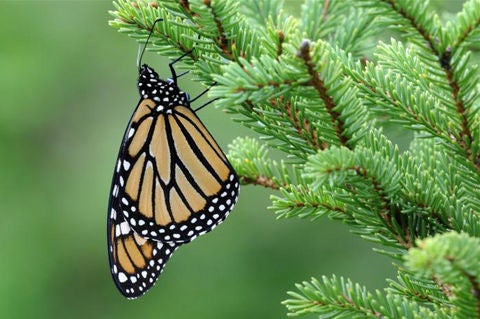Sarah Coulber

In the coming weeks, many species of birds and butterflies will begin their annual migrations back to more southerly regions. Your garden can help them during the trip south — and on the return journey in spring. Here’s how to get started.
Lay on a meal
Migrating birds and butterflies need food when preparing for fall journeys and when they arrive in the spring. Populate your garden with regionally native plants that flower or bear fruit in different seasons to help them out. Fall blooming plants include asters, goldenrods and perennial sunflowers. Berry-producing shrubs include dogwoods and viburnums. Plants that flower early in spring, such as amelanchier, cherries, hawthorns and willows provide nectar and pollen when migrating species return.
Leave seed heads alone
Leaving perennial seed heads, such as echinacea and brown-eyed Susans, can provide food for overwintering species, such as finches and juncos. They can also feed returning birds in the spring. Shrubs such as winterberry holly, sumac and highbush cranberry produce berries can linger into late winter, providing food for early birds that might face a late-winter cold snap.
Make mud puddles
To encourage butterflies in your garden, maintain a damp area with mud, sand or manure. Butterflies drink in minerals from these areas in a process known as “mudpuddling.”
Shop wisely
Use your shopping power to shape the face of our agricultural practices by buying organic and local when you can. Birds need an abundance of food to complete their migration and many rely on a diversity of insects, especially ones uncontaminated by pesticides. Small-scale organic agriculture has been shown to increase the variety of insects relative to large scale farming practices. This farming method also helps migrating monarchs, which are especially sensitive to pesticide use.
|
Reprinted from the September/October 2011 issue of Canadian Wildlife magazine. Get more information or to subscribe. |
